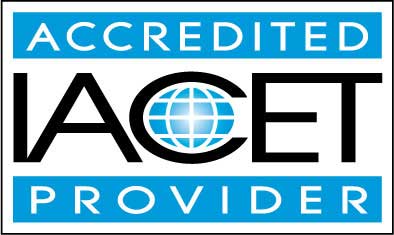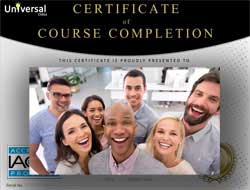Online Class: ESL Basic Grammar

no certificate
with CEU Certificate*
-
11Lessons
-
23Exams &
Assignments -
3,862Students
have taken this course -
6Hours
average time -
0.6CEUs
Course Description
Mastering English: A Comprehensive Guide to Grammar and Effective Writing
Language serves as a bridge, connecting diverse minds and facilitating the exchange of ideas. English, with its global reach, is an especially potent medium of this communication. However, to harness its full potential and express oneself with clarity and impact, one must grasp its intricate grammar and nuances. Welcome to our extensive course on English grammar and writing—an empowering journey that transcends basic rules and explores the art of effective communication.
Understanding the Significance of English Grammar:
In today's globalized world, English is more than just a language—it's a powerful tool that drives commerce, fuels diplomacy, and fosters cultural exchanges. According to recent data, over 1.5 billion people worldwide are learning English, a testament to its significance. Yet, despite its widespread use, many struggle with the foundational elements of English grammar, affecting their confidence and efficacy in both personal and professional settings.
But why is grammar so pivotal? Grammar is the mechanism that brings coherence to our thoughts, allowing us to convey complex ideas, emotions, and information with precision. It's the difference between being understood and being overlooked. In professional arenas, from corporate boardrooms to academic circles, proficient grammar can influence career trajectories, enabling job promotions, academic acclaim, and increased earning potential.
Course Offerings:
Our meticulously curated course caters to a diverse audience—from those for whom English is a second language, to native speakers aiming to refine their skills.
-
Introduction to ESL Grammar: Dive into the essence of English grammar, exploring its significance and foundational principles.
-
Nouns: Understand the role of nouns, their types, and their application in framing meaningful sentences.
-
Verbs: Delve into the dynamic world of verbs, their tenses, and their crucial function in denoting actions and states.
-
Using Pronouns Properly: Grasp the importance of pronouns in preventing repetition and ensuring sentence variety.
-
Using Prepositions: Learn about these vital linguistic connectors that lend context and clarity to sentences.
-
Conjunctions: Understand how conjunctions weave together ideas, enriching content and improving flow.
-
All About Adjectives and Adverbs: Dive deep into these descriptive tools, enhancing the vividness and specificity of communication.
-
Sentence Structure Know-How: Master the architecture of English sentences, ensuring clarity, coherence, and impact.
-
Writing Basics: Beyond individual components, understand the art of crafting compelling narratives, persuasive arguments, and impactful content.
-
Punctuation, Numbers, and Time: Navigate the subtleties of punctuation, ensuring precision, while also mastering the linguistic representation of numbers and time.
-
Write What You Mean and Mean What You Write: Imbibe the ethos of authentic and purposeful communication, a skill that elevates mere content to compelling prose.
Rather than viewing grammar as a rigid set of rules, we encourage students to see it as a toolkit—a means to shape ideas, share stories, and influence audiences. This course offers more than just knowledge; it promises transformation—a shift from apprehensive speakers to confident communicators.
Whether you're looking to elevate your academic essays, communicate more effectively in a global business environment, or simply gain a deeper appreciation for the English language, this course is your comprehensive guide.
Remember, English grammar isn't just about correctness; it's about clarity, credibility, and connection. Join us on this enlightening journey and redefine your relationship with the English language.
Course Motivation
History of the English Language
Many people may not realize that no grammar books have been found that date prior to the 1700s. While that may be good news for some, it doesn't help linguists, people who understand and study languages, to study how the English language grew and developed.
What is understood is that experts believe that English grammar is based greatly on the grammar and speaking patterns found in Latin and Greek languages. Many English words used today came from the Latin or Greek words, especially those in the medical and scientific fields. Grammar rules were developed to help define speaking and writing patterns throughout widespread areas.
English language experts believe that English, more commonly known as the Anglo-Saxon language, came from the areas that are now known as Denmark and Germany. This language, known as Old English, sounded very different than it does today. It was also written differently. Over the years, the English language used many other words from different countries, including French. This language was known as Middle English.
Between 1500 and 1800, Early Modern English developed. Pronunciation changed, and the influence from people around the world introduced many new words and phrases into the English language. The creation of books made it easier to create a common language, and many people learned how to read. At this time, grammar and spelling rules were developed. The first English dictionary was published in 1604.
After the 1800s, Modern English was developed. Modern English brings with it many new terms that were created as inventions and technology were developed and advanced. The British Empire covered nearly one quarter of the earth, and as a result, the English language also absorbed foreign words from many different countries.
In the United States, immigrants brought with them their own languages, which also eventually became part of regular usage in America. Some common Spanish words like arroyo, and canyon, are still used in the United States today. Through French settlements found in the south and southeast states, French words and West African words brought by slaves have also been incorporated into the English language.
In this way, a language develops. There are few languages that don't use some forms of English vocabulary and the same goes for the English language, using many words and phrases from other nationalities.
As with any language, the English language is basically divided into two areas: the spoken and the written word. As in any language, such as Spanish, French, German, and even Chinese, people rarely write the same way as they speak.
Grammar, at its most basic definition, represents ideas about what is considered "correct". The study of any language might often be frustrating and confusing. However, to make oneself understood in any area of society, one must learn how to speak correctly and properly in order to encourage job placement, career advances, and the ability to communicate.
Students of English as a second language should also be aware that speech patterns and grammar rules might differ between countries that speak English. For example, in the United States, citizens speak what is called American English. In Great Britain, the spelling of various words as well as their pronunciation is different than those found in the United States. The same goes for the English spoken in Australia.
Grammar, or the structure of English, is all about style, rules, and guidelines. However, all of these have changed through the years. Geographical locations may also have a great deal to do with how a language is spoken or written. If you have had the opportunity to travel around the United States, you will surely have noticed that a person who speaks English in the southern state of Louisiana might sound and speak very differently than an individual who lives in rural Massachusetts. The same goes for someone who lives in Southern California, as opposed to someone who lives in New York City.
The glory of the written and spoken word is that it is constantly evolving and developing. The way people speak on the street may be different than the way the same phrase would be written on a piece of paper, but common rules and proper sentence structure still apply.
Native English speakers rarely think about the structure of the sentences they form. Those who are learning English must constantly remember details such as subject-verb agreement, tense, and verb placement. When a native English speaker learns a foreign language, they must also learn different grammar rules and sentence structure as well.
Understanding basic English grammar rules and principles will help to improve English speech, as well as understanding of the written word. This course is not designed to teach you everything there is to know about English grammar, but will cover the basics, so that clarity and comprehension may be increased. Think of this grammar course as a starting point that will help to improve not only how you communicate with others, but enhance your ability to make yourself understood in a wide variety of situations.
Why You Should Take This Course
- Completely Online
- Self-Paced
- 6 Months to Complete
- 24/7 Availability
- Start Anytime
- PC & Mac Compatible
- Android & iOS Friendly
- Accredited CEUs

Course Lessons
Lesson 1: Introduction to ESL Grammar
 Lesson 1 Video
Lesson 1 Video Lesson discussions: Reasons for Taking this Course
Lesson discussions: Reasons for Taking this Course Complete: Lesson 1 Assignment: Getting Started
Complete: Lesson 1 Assignment: Getting Started Assessment: Lesson 1 Exam
Assessment: Lesson 1 Exam
Lesson 2: Nouns
 Lesson 2 Video
Lesson 2 Video Assessment: Lesson 2 Exam
Assessment: Lesson 2 Exam Assessment: Lesson 2 Exercise: Find the Subject Noun
Assessment: Lesson 2 Exercise: Find the Subject Noun
Lesson 3: Verbs
 Lesson 3 Video
Lesson 3 Video Review 5 Practice Worksheets
Review 5 Practice Worksheets Assessment: Lesson 3 Exam
Assessment: Lesson 3 Exam Assessment: Lesson 3 Exercise: Find the Verb
Assessment: Lesson 3 Exercise: Find the Verb
Lesson 4: Using Pronouns Properly
 Lesson 4 Video
Lesson 4 Video Review Practice Worksheet: optional-Grammar_Run-On_Sentences_Wk_2.pdf
Review Practice Worksheet: optional-Grammar_Run-On_Sentences_Wk_2.pdf Assessment: Lesson 4 Exam
Assessment: Lesson 4 Exam Assessment: Lesson 4 Exercise: Using the Correct Pronoun
Assessment: Lesson 4 Exercise: Using the Correct Pronoun
Lesson 5: Using Prepositions
 Lesson 5 Video
Lesson 5 Video Assessment: Lesson 5 Exam
Assessment: Lesson 5 Exam Assessment: Lesson 5 Exercise: Identify the Preposition
Assessment: Lesson 5 Exercise: Identify the Preposition
Lesson 6: Conjunctions
 Lesson 6 Video
Lesson 6 Video Review 5 Practice Worksheets
Review 5 Practice Worksheets Assessment: Lesson 6 Exam
Assessment: Lesson 6 Exam Assessment: Lesson 6 Exercise: Conjunction Use
Assessment: Lesson 6 Exercise: Conjunction Use
Lesson 7: All About Adjectives and Adverbs
 Lesson 7 Video
Lesson 7 Video Review 5 Practice Worksheets
Review 5 Practice Worksheets Assessment: Lesson 7 Exam
Assessment: Lesson 7 Exam Assessment: Lesson 7 Exercise: Identifying Adjectives and Adverbs
Assessment: Lesson 7 Exercise: Identifying Adjectives and Adverbs
Lesson 8: Sentence Structure Know-How
 Lesson 8 Video
Lesson 8 Video Complete: Lesson 8 Assignment: Tackling Sentence Structure
Complete: Lesson 8 Assignment: Tackling Sentence Structure Assessment: Lesson 8 Exam
Assessment: Lesson 8 Exam
Lesson 9: Writing Basics
 Lesson 9 Video
Lesson 9 Video Review 4 Practice Worksheets
Review 4 Practice Worksheets Complete: Lesson 9 Assignment: Basic Writing
Complete: Lesson 9 Assignment: Basic Writing Assessment: Lesson 9 Exam
Assessment: Lesson 9 Exam
Lesson 10: Punctuation, Numbers, and Time
 Lesson 10 Video
Lesson 10 Video Review 5 Practice Worksheets
Review 5 Practice Worksheets Complete: Lesson 10 Assignment: Practicing Punctuation, Numbers and Time
Complete: Lesson 10 Assignment: Practicing Punctuation, Numbers and Time Assessment: Lesson 10 Exam
Assessment: Lesson 10 Exam
Lesson 11: Write What You Mean and Mean What You Write
 Lesson 11 Video
Lesson 11 Video Review 5 Practice Worksheets
Review 5 Practice Worksheets Lesson discussions: What is your opinion of this course?; Program Evaluation Follow-up Survey (End of Course); Course Comments
Lesson discussions: What is your opinion of this course?; Program Evaluation Follow-up Survey (End of Course); Course Comments Complete Assignment: Putting it all Together
Complete Assignment: Putting it all Together Assessment: Lesson 11 Exam
Assessment: Lesson 11 Exam Assessment: The Final Exam
Assessment: The Final Exam
Learning Outcomes
- Describe and recognize nouns.
- Describe and recognize verbs.
- Use pronouns properly.
- Use prepositions properly.
- Identify conjunctions.
- Demonstrate proper use of adjectives and adverbs.
- Demonstrate proper sentence structure use.
- Demonstrate correct use of punctuation, numbers and time.
- Demonstrate mastery of lesson content at levels of 70% or higher.
Additional Course Information

- Document Your Lifelong Learning Achievements
- Earn an Official Certificate Documenting Course Hours and CEUs
- Verify Your Certificate with a Unique Serial Number Online
- View and Share Your Certificate Online or Download/Print as PDF
- Display Your Certificate on Your Resume and Promote Your Achievements Using Social Media

Choose Your Subscription Plan
No Certificate / No CEUs
This course only
| Includes certificate | X |
| Includes CEUs | X |
| Self-paced |

|
| Instructor support |

|
| Time to complete | 6 months |
| No. of courses | 1 course |
Certificate & CEUs
This course only
| Includes certificate |

|
| Includes CEUs |

|
| Self-paced |

|
| Instructor support |

|
| Time to complete | 6 months |
| No. of courses | 1 course |
Certificates & CEUs
Includes all 600+ courses
| Includes certificate |

|
| Includes CEUs |

|
| Self-paced |

|
| Instructor support |

|
| Time to complete | 12 Months |
| No. of courses | 600+ |
Certificates & CEUs
Includes all 600+ courses
| Includes certificate |

|
| Includes CEUs |

|
| Self-paced |

|
| Instructor support |

|
| Time to complete | 24 Months |
| No. of courses | 600+ |
Student Testimonials
- "I liked using this course as a review on writing components and skills that are important for writing and talking to others. I liked how the instructor put together the course material and the quizzes. I liked how she complemented me on my assignments and quizzes." -- Oksana B.
- "The instructor was very nice and was really quick to email back." -- Devin S.
- "This instructor really knows her stuff. She is very friendly and helpful." -- Jennie W.
- "I am very satisfied with this course." -- Meishan F.
- "The instructor was very supportive!" -- Alma G.
- "She was very helpful and kept you inform." -- Harold S.
- "The class and instructor were both great!" -- Chloe T.
- "The instructor has this course very organized and is an expert in English grammar. The most helpful part of the course was how to write better sentences and verbs." -- Maria A.
- "The instructor was very nice and was really quick to email back." -- Devin S.
- "The part most helpful for me, was the exercises in each lesson. Amazing!" -- Yakelis D.
Related Courses
-
 95 hours
9.5 CEUs
Math All-In-One (Arithmetic, Algebra, and Geometry Review)
+ More Info
95 hours
9.5 CEUs
Math All-In-One (Arithmetic, Algebra, and Geometry Review)
+ More Info
-
 10 hours
1.0 CEUs
Memory and Concentration Techniques
+ More Info
10 hours
1.0 CEUs
Memory and Concentration Techniques
+ More Info
-
 87 hours
8.7 CEUs
Writing Help Course Bundle
+ More Info
87 hours
8.7 CEUs
Writing Help Course Bundle
+ More Info
-
 52 hours
5.2 CEUs
ESL Grammar Skills: Level 1-5 Course Bundle
+ More Info
52 hours
5.2 CEUs
ESL Grammar Skills: Level 1-5 Course Bundle
+ More Info
-
 9 hours
0.9 CEUs
Resume Writing 101
+ More Info
9 hours
0.9 CEUs
Resume Writing 101
+ More Info
-
 7 hours
0.7 CEUs
Speed Reading 101
+ More Info
7 hours
0.7 CEUs
Speed Reading 101
+ More Info
-
 11 hours
1.1 CEUs
English Grammar Level 1
+ More Info
11 hours
1.1 CEUs
English Grammar Level 1
+ More Info
-
 7 hours
0.7 CEUs
Understanding Learning Styles
+ More Info
7 hours
0.7 CEUs
Understanding Learning Styles
+ More Info
-
 7 hours
0.7 CEUs
How to Teach Reading Fundamentals
+ More Info
7 hours
0.7 CEUs
How to Teach Reading Fundamentals
+ More Info
-
 9 hours
0.9 CEUs
Reading Comprehension 101
+ More Info
9 hours
0.9 CEUs
Reading Comprehension 101
+ More Info
-
 5 hours
0.5 CEUs
Vocabulary Level 2
+ More Info
5 hours
0.5 CEUs
Vocabulary Level 2
+ More Info
-
 5 hours
0.5 CEUs
Vocabulary Level 3
+ More Info
5 hours
0.5 CEUs
Vocabulary Level 3
+ More Info
-
 5 hours
0.5 CEUs
Emotional Intelligence
+ More Info
5 hours
0.5 CEUs
Emotional Intelligence
+ More Info
-
 11 hours
1.1 CEUs
ESL Basic Writing Skills
+ More Info
11 hours
1.1 CEUs
ESL Basic Writing Skills
+ More Info
-
 5 hours
0.5 CEUs
Building Children's Reading Skills
+ More Info
5 hours
0.5 CEUs
Building Children's Reading Skills
+ More Info
-
 12 hours
1.2 CEUs
ESL Grammar Skills Level 1
+ More Info
12 hours
1.2 CEUs
ESL Grammar Skills Level 1
+ More Info
-
 7 hours
0.7 CEUs
Basic English Speaking Skills
+ More Info
7 hours
0.7 CEUs
Basic English Speaking Skills
+ More Info
-
 11 hours
1.1 CEUs
Essay Writing 101
+ More Info
11 hours
1.1 CEUs
Essay Writing 101
+ More Info
-
 5 hours
0.5 CEUs
Critical Thinking Skills
+ More Info
5 hours
0.5 CEUs
Critical Thinking Skills
+ More Info
-
 20 hours
2.0 CEUs
Typing and Keyboarding 101
+ More Info
20 hours
2.0 CEUs
Typing and Keyboarding 101
+ More Info
-
 8 hours
0.8 CEUs
Teaching Grammar to ESL Students
+ More Info
8 hours
0.8 CEUs
Teaching Grammar to ESL Students
+ More Info
-
 5 hours
0.5 CEUs
Creative Thinking Skills
+ More Info
5 hours
0.5 CEUs
Creative Thinking Skills
+ More Info
-
 5 hours
0.5 CEUs
Basic Research Skills
+ More Info
5 hours
0.5 CEUs
Basic Research Skills
+ More Info
-
 11 hours
1.1 CEUs
Punctuation and Grammar 101
+ More Info
11 hours
1.1 CEUs
Punctuation and Grammar 101
+ More Info
-
 6 hours
0.6 CEUs
English Grammar Level 3
+ More Info
6 hours
0.6 CEUs
English Grammar Level 3
+ More Info
-
 7 hours
0.7 CEUs
Innovative Thinking Skills
+ More Info
7 hours
0.7 CEUs
Innovative Thinking Skills
+ More Info
-
 11 hours
1.1 CEUs
English Composition 101
+ More Info
11 hours
1.1 CEUs
English Composition 101
+ More Info









